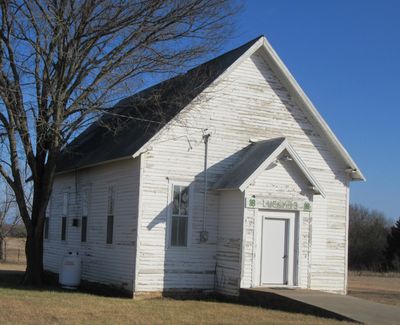Glenloch
Glenloch, a Ghost Town of Anderson County
The plat for the town of Glenloch, also known as Glendale, was filed on July 20, 1889 by the Glenloch Town Company by J.N. Caldwell, R.N. Kerr, John Watt, and Walter Latimer. The land where the town of Glenloch was located was purchased from R.N. Kerr. A post office was in place, January 26, 1887, before the town of Glenloch was platted.
One of the first buildings erected was by Joseph M. Caldwell on the town site and was a general merchandise store on one side of the of the lower floor, and John Watt put in a lumber and hardware business on the other side of the lower floor. The second floor was used by the United Presbyterian Church to hold services and as a town hall.
The first blacksmith was Sam Wortman who was there when the town was laid out. He built a blacksmith shop in 1902. After Mr. Wortman died Fred W. Bennett bought the shop and moved it to the east side of town. The shop burned in 1946. In August of 1949 Fred Bennet was reported to be the oldest blacksmith in the state of Kansas.
A depot was built soon after the Kansas, Nebraska, and Dakota Railroad came through town and one of the early agents was Richard Morris. On March 16, 1911, the depot burned down. A railroad box car was used to replace the old depot and it was used until the railroad was abandoned in 1934. Thomas Watkinson was the last postmaster when the post office was discontinued February 15, 1902.
The Glenloch Methodist Church cornerstone was laid on October 20, 1902. Church services, Sunday School and community activities was held in the church. The church is the only building left in Glenloch. It now belongs to the Lucky 13 4-H Club. The streets are still present on the townsite and when Anderson County named the roads in the county, they put up street signs with the street names in Glenloch.

Glenloch Methodist Church still stands in Glenloch. It is now Lucky 13 4-H's clubhouse.
Photo Gallery

Street sign in Glenloch.

Fred W. Bennet pointing a plow shear. The oldest blacksmith in Kansas in 1949.

Fred W. Bennett's blacksmith shop, built in 1902 and burned in 1946.
Last business in Glenloch in 1936.

Kansas, Nebraska and Dakota train that passed through Glenloch.
